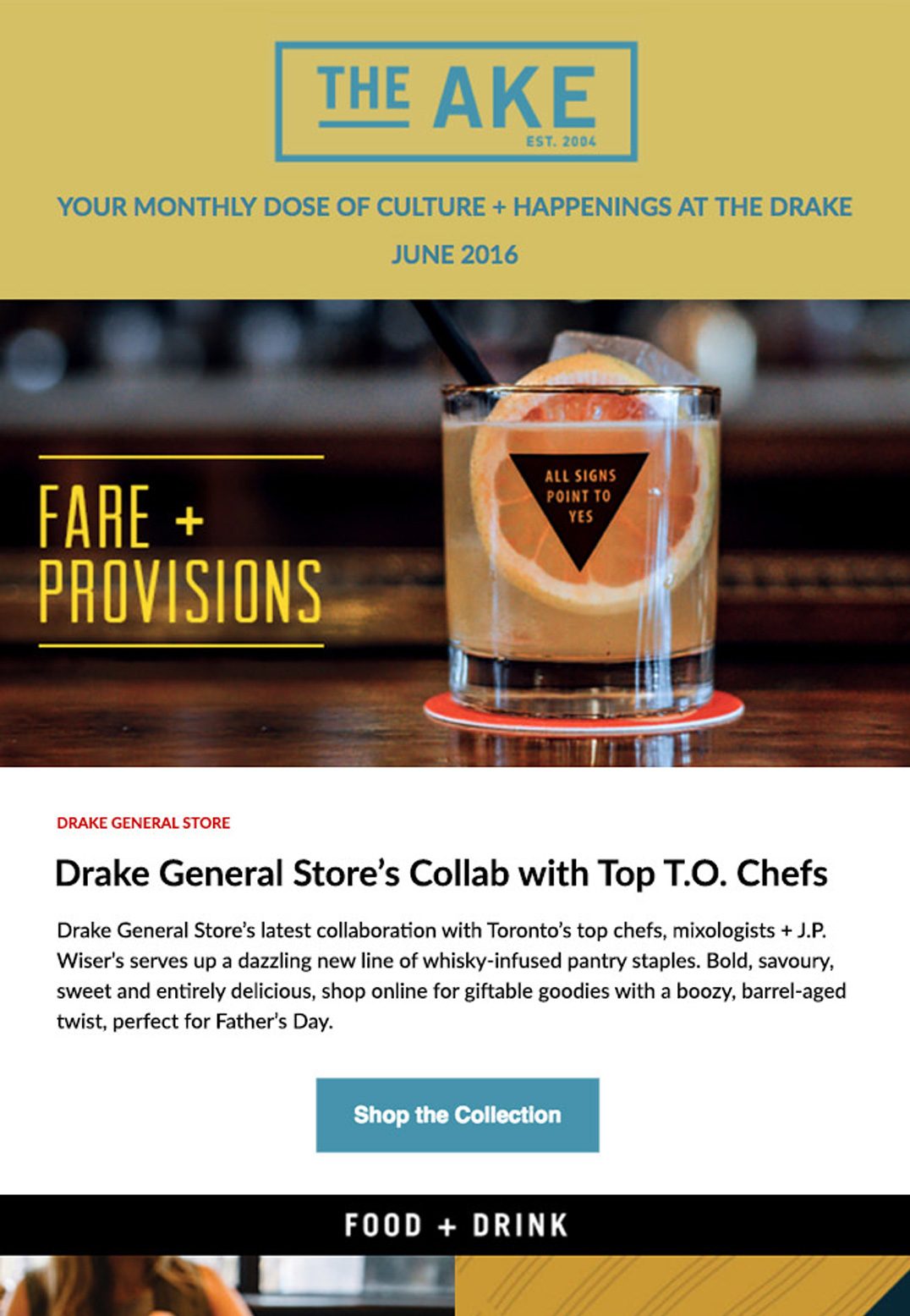How to master natural language in your email newsletters
Newsletters can be counted among some of the oldest tools in a marketer’s toolbox. The reason they're still being used today is simple—they’re effective. If they're written properly, that is.
One key element you need to master if you want to see quality engagement is the use of natural language.
People love to be in the know concerning their favorite brands. And the best way you can do that is through your email newsletter. But no matter how much your customers love your brand, if they fail to relate to your newsletter, engagement will plummet.
The simplest way to dodge this disengagement? By using natural language in your newsletters.
Why email newsletters?
Every marketer needs to be sending out a regular newsletter. Here are 3 great reasons why you should value this form of marketing.
1. Increases brand awareness
Newsletters, as the name suggests, are a way of passing on information to your customers. They’re not meant to be sales-focused, even though they add to the sales experience. Which is why your newsletters should be 90 percent informational, and 10 percent promotional.

By virtue of being informational, newsletters increase brand awareness. The more familiar your brand is, the more likely people will buy from you. Research actually shows that it takes 6 to 8 touches before a lead decides to purchase from you.
And what better way to “touch” a lead than by sending them a regular newsletter?
2. Drives engagement
People have a lot on their hands in today’s fast-paced world. They can easily forget about you if you spend prolonged periods of time without keeping in touch.
Besides keeping your brand at the top of your customers’ minds, newsletters also help increase engagement with your website or e-commerce store. The power of engagement is that it fosters loyalty. Loyalty, in turn, increases the chances of a customer becoming a lifetime customer by an astounding 306%.
3. Boosts sales
Although newsletters are more informational than promotional, when done right, they can be a great way of boosting your sales.
According to research conducted by Oracle, 56% of consumers value personalized offers. And that’s exactly what a newsletter affords you—an opportunity to send out personalized offers.
Don’t underestimate the 10% promotional content you send out in your newsletters. It can definitely be tied to boosting your sales.
Now that you’ve seen the impact newsletters can have on your business, let’s look at the ways you can master natural language in your newsletters.
5 ways to master natural language in your email newsletter
One of the most challenging aspects of creating a newsletter that succeeds in its mission is the newsletter copy.
No matter how beautiful your newsletter template may be, if your customers can’t relate to it, they can’t engage with your brand. This is why natural language plays a big part in the creation of your newsletter.
Here are 5 ways to make sure you nail this crucial part of your newsletter.
1. Understand your audience.
The first step in mastering natural language in your newsletters is to understand your audience. Even with a huge email list, you can have insight into the kind of people you have on your list through data analytics.
Record as much data as you possibly can and use that to build buyer personas. These personas will help you know who you’re writing for. And that, in turn, will help create the right kind of content for your newsletter.
Remember, you may be sending your newsletter to a large list, but you need to write as if you’re addressing one person. This is where data comes to your rescue. It helps you understand your audience and thus send out personalized content.
2. Avoid jargon at all costs.
Every industry has its lingo. And it’s very tempting to use those buzzwords and to allow insider verbiage creep into your marketing. While it may be fine for internal communication, it’s a no-no to include jargon in your communication with your customers.
The main problem with jargon is that it’s boring. And boring means your newsletter won’t get read. It may even end up in the trash box.
To make matters worse, jargon can be difficult to understand and at times misleading. These are all factors that weaken your copy, causing you to lose customers at a fast rate.
Besides, jargon has the same shelf life as fresh milk—it quickly changes. This makes it difficult to maintain consistency in your brand voice. Once you lose your brand voice, you become unfamiliar to your customers, thereby reducing your chances of turning them into repeat customers.
3. Speak your customer’s language.
Sure, you have a lot of different customers on your list spanning many socio-economic, geographical, and educational divides. So how can you speak in a way that resonates with all of them?
Natural language.
This means crafting copy that everyone is able to understand. Copy written in such a way that it’s easy to read and understand.
Here are a few tips to help make your newsletter copy easy to read and digest.
Keep your sentences (and paragraphs) short.
By keeping your sentences short, you make it easy for readers to flow with your message. It eliminates confusion created by run-on sentences. Short sentences are punchy and engaging, perfect for keeping your reader captivated. Paragraphs should also be kept short in order to enhance user experience.
Tookapic’s newsletter below provides a lot of updates such as previous posts, current theme, and social links all in one page. However, it still proves the point that short paragraphs and a minimalistic design get straight to the point without overwhelming the reader.

Image Source: Really Good Emails
Use simple words.
Using sesquipedalian words that your customers have to Google—go ahead, Google it—will not only confuse your customers, but it’ll turn them off. After all, no one likes a wise guy. Besides, once they turn to Google, they may never come back to your newsletter.
Simple words drive your point home easier and faster than more complicated words. In the same vein, it’s important that you use common words. Avoid trendy or colloquial words, as other customers in a different demographic may not understand what you’re saying.
Avoid acronyms.
Tempting as it may be to use acronyms in your newsletter, better avoid using them.
Like fancy words, acronyms do more harm than good in a newsletter. They can be confusing. That is especially true as some have multiple meanings.
Show, don’t tell.
One thing that makes natural language powerful is that it’s more descriptive than informative. Engaging conversations are driven by the principle of showing, not telling. And that same principle applies to your newsletter as well.
Descriptive words are powerful because they appeal to the senses. They help give your reader an immersive experience, bringing them into a specific mindset. This is the perfect setting if you want to entertain, inform, or persuade your readers.
4. Be friendly.
While your customer may not be able to see your smile, they should feel the warmth of your words in your newsletter. This is achieved by using kind words and keeping the tone of your newsletter casual and upbeat.
Asking questions is a great way of adding a human touch to your newsletter. Your reader will feel like they’re conversing with a friend. The result is that they end up trusting you as they would a physical friend.
A word of warning—avoid being overly friendly. This will detract from your professionalism and may lose your reader’s trust. Strike a good balance between professionalism and friendliness and you’ll be on good ground.
5. Use writing tools.
This last point may not really be a tip on mastering natural language, but it is a helpful tip nonetheless: Use writing tools to improve your natural language.
Writing a highly engaging newsletter is no easy task. That’s because natural language is no longer natural for many professional marketers. The use of jargon, acronyms, and a whole host of industry-related words has become the normal way to talk.
Thankfully, tools like the Hemmingway app, Grammarly, and many more are there to help you perfect your writing. Not only will they help you with grammatical correctness, but writing tools will also help you to make sure that your newsletter copy is basic enough to be clearly understood by anyone.
Wrap up
Communication plays a major role in the success or failure of a business. If you master it, you’ll be able to build good relationships with your customers.
Make sure you use natural language all the time and you’ll enjoy good engagement with your customers.
Now that you have mastered natural language in your newsletter copy, why not start sending even more engaging campaigns with an email marketing service that works for you?
MOST RECENT ARTICLES
Want to engage your audience and grow your brand? Try Emma's robust easy-to-use product today.













